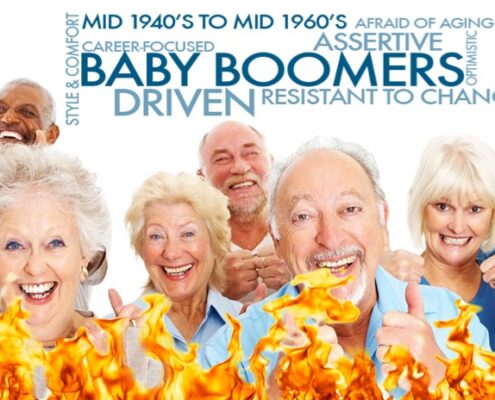Preaching To The Baby Boomers
Preaching To The Baby Boomers
We are considering how to preach to the various generations in your ministry. In the last post we looked at the preferences of the Builder, or Silent generation. This post will focus on preaching too the baby boomers in your church, those born 1946 to 1964.
Who Are These People?
After World War II ended in 1945, soldiers came home to resume their lives. In 1946, not surprisingly, a baby boom began. From 1946 through 1964,  approximately four million babies were born each year in the United States. That works out to about seventy-six million additions to the population in the US! The appropriately named Baby Boomers became, until recently, the largest generation in the country. They make up about 30% of the US today (Again, I have access to more data from the US). If you are in the US, or even if you are not, you likely have quite a few of these people in your church, and so it will be good to understand preaching to the baby boomers in your congregation.
approximately four million babies were born each year in the United States. That works out to about seventy-six million additions to the population in the US! The appropriately named Baby Boomers became, until recently, the largest generation in the country. They make up about 30% of the US today (Again, I have access to more data from the US). If you are in the US, or even if you are not, you likely have quite a few of these people in your church, and so it will be good to understand preaching to the baby boomers in your congregation.
Formative Experiences of the Baby Boomers
There are many formative aspects to this generation:

- The Korean War
- The Vietnam War
- The social upheaval of the sixties was largely caused by this generation.
- The Watergate political scandal caused people of this generation to be less loyal, and less trusting of leadership.
- There were racial tensions in the country in the late 1960’s, with the culmination in the assassination of Dr. Martin Luther King. Riots were the norm for a time as Black Americans began to more noticeably protest generations of mistreatment.
- Forced immigration colored this generation as well.
All of these events impacted this group of people, and they impact how we approach preaching to the baby boomers in your church.
Religion and the Baby Boomers
Here is how Darrell Hall describes the response of the Baby Boomers to all the of the events listed above:
Upon reaching young adulthood, many boomers went in one of three spiritual directions: post-modernism or other human centered worldviews spawned by modern enlightenment; backlash against the church fueled by legitimate gripes or general anti-institutionalism; or entrenchment in Christianity, very often of the moralistic nature. (Speaking Across Generations, p. 58)
As a result of these choices, the percentage of Baby Boomers who attend church regularly has declined. Here are some concerning statistics:
- In 1991 (boomers were in their 30’s to 50’s) 50% attended church regularly.
- In 2011 (boomers were in their 50 to 70’s) 38% attended church regularly.
- 2019 (just before the pandemic) only 33% identified as attending church regularly.
I hope you begin to see the challenge of preaching to the Baby Boomers in your church and community.
What Kind of Preaching Engages Baby Boomers?
Here’s what Baby Boomers say they want in a sermon. Interestingly, it’s the same top 3 outcomes that the Builder generation identified, but in a slightly different order.
- 50% said they want a sermon that is applicable to their life. In other words, they want something practical for their daily lives, or something that helps them understand life.
- 34% said they want to feel a personal connection with God. In other words, they want to know God’s love and care for them. I suspect this gets stronger as people age.
- 28% said they want to understand a passage of Scripture in greater detail.
Again, it is interesting that the Builder generation responded more positively to propositional preaching. That means they liked something that proposed truth and then backed it up with “proof” from Scripture. Boomers, when shown various styles of preaching, preferred a conversational style. These are things to think about when preaching to the baby boomer generation of your church and community.
I Am A Baby Boomer
This is my generation. Here’s what I have found has improved my preaching to these people who have had my life experience:
- Many years ago, I moved away from preaching with notes to noteless preaching. This required quite a bit of challenge in preparation. I still wrote a complete manuscript, but practiced preaching without notes until I could present the message in a more direct way.
- I came out from behind the pulpit. For many years I wandered around the

Lloyd Ogilvie
stage while preaching, but now, largely because the camera operators have asked me to, I limit how far I go. But I try to make my communication more immediate between the audience and my preaching. The first person who taught me this style was Lloyd Ogilvie, long-time Senate Chaplain and long-time pastor of Hollywood Presbyterian Church. His preaching definitely struck me as having a conversation with his congregation. This post from earlier in this blog describes how to move to this style.
- More illustrations for application. I try to make these things that will resonate with my hearers.
So, preach with baby boomers in mind, and maybe they’ll start coming back to church as they age.



